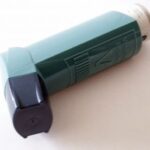Our area of Western Tennessee is currently experiencing drought conditions. Today, we are having a Code Orange Alert. Since I have asthma and two young children with allergies, I pondered what exactly does it mean to be a Code Orange Alert day? What other alerts exist and what do they mean? How should the general public react and prepare when these alerts are issued? What can we do to help prevent bad air quality?
It is hard to believe it is time for the children to go back to school as hot as it is around the country. Many other areas in the country are experiencing similar concerns with heat and air contaminates. Our weather forecast actually calls for at least 97 degrees for the next seven days with little or no rain. As an asthma sufferer, I am feeling sluggish and experiencing a lack of energy, despite efforts to stay inside.
The air quality rating is determined by the amount of air pollution that is predicted which would be unhealthy for sensitive groups. When the Air Quality Index (AQI) reaches a high reading, alerts are issued.
The AQI is simply and index for reporting air quality. This tells you how clean the air is and whether there is a danger to one’s health. Five major pollutants are calculated to determine AQI: ground-level ozone, particle pollution, carbon monoxide, sulfur dioxide, and nitrogen dioxide. In an effort to protect the general public, The Environmental Protection Agency (EPA) established standards of air quality. Ground-level ozone and airborne particles are the two pollutants that pose the highest threat.
Ground-level ozone is not emitted directly into the air. It results from a chemical reaction between oxides of nitrogen and volatile organic compounds (sunlight.) Exhaust from cars, industrial facilities, electric utilities, gas vapors and chemical solvents are some major sources. Breathing ozone can cause wheezing, coughing, congestion and make asthma, bronchitis and emphysema worse.
Airborne particles or particle matter are small drops of liquids or solids that can cause major damage inside of the lung. People with respiratory conditions suffer worse if airborne particles enter the body, but the general public can experience symptoms such as shortness of breath, coughing and phlegm.
The AQI is somewhat like a rating scale. Imagine a rating system of 0 – 500. If the AQI measures 50, air quality is within a reasonable level. If the measure is 300, then there is more of a risk.
AQI Ratings
Green Alert: 0 – 50 Good
Yellow Alert: 51 – 100 Moderate
Orange Alert: 101 – 150 Unhealthy for sensitive groups
Red Alert: 151 – 200 Unhealthy
Purple Alert: 201 – 300 Very Healthy
Maroon Alert: 301 – 500 Hazardous
Code Orange Alert means that the general public is not likely to be affective. However, sensitive groups may be affected. People with respiratory problems especially lung disease, people with heart conditions, children and the elderly would be members of the sensitive group.
If conditions warrant a Code Red Alert, anyone can be affected. Members of sensitive groups may feel the most serious effects and health concerns.
Code Purple Alert means the general public may feel serious effects from the air quality. Citizens are urged to follow the warnings and advice accompanying these alerts.
Code Maroon Alert is the most serious rating possible. The entire population would probably be affected if the air quality reaches this level.
AQI Ratings are serious and should not be discounted even if you are not a member of the sensitive groups. The next time you find out from your local news that your area is affected, be sure to follow the advice and use these explanations as a guideline. Make sure to alert friends and family members that belong to sensitive groups. It is also helpful to remember we “are what we breathe” and become active in air pollution control including fire prevention and no-smoking efforts. By helping to be proactive as well as following the advice of the Environmental Protection Agency (EPA,) you can help protect yourself and others from the harmful affects of poor air quality.
Refer to www.airnow.gov to determine the current Air Quality Index (AQI) in your area.





